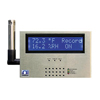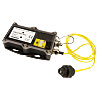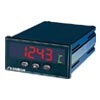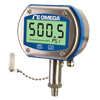 Imagine a manufacturing facility where everything goes as planned. Processes are always operating within controlled limits, variation is eliminated, and every final product is the same. Nothing ever breaks down and unplanned downtime just doesn’t happen. No raw material is ever wasted, yields are exactly where they should be, day in and day out, and energy costs are minimized. Then layer on top a sea of data about the processes, enabling engineering to identify and prioritize improvement opportunities.
Imagine a manufacturing facility where everything goes as planned. Processes are always operating within controlled limits, variation is eliminated, and every final product is the same. Nothing ever breaks down and unplanned downtime just doesn’t happen. No raw material is ever wasted, yields are exactly where they should be, day in and day out, and energy costs are minimized. Then layer on top a sea of data about the processes, enabling engineering to identify and prioritize improvement opportunities.
Sounds like manufacturing utopia, but it’s not far away if Industry 4.0 lives up to its potential. This White Paper from OMEGA Engineering explains the concepts behind Industry 4.0 and their implications for engineers and technologists in manufacturing and process industries. Sections address:
- The origin and meaning of “Industry 4.0”
- IIoT and M2M
- Commercial and industrial applications
- Current status
- Issues and concerns
The Origin and Meaning of “Industry 4.0”
A change is coming to manufacturing as momentous as the arrival of the steam engine, the switch to electric power, and the adoption of computerized data processing and automation. German industrialists and academics have named this shift “Industry 4.0,” recognizing that it means a new approach to manufacturing.
Industry 4.0 consolidates advances in sensors and communications already underway. It’s a coordinated program directed towards the development and deployment of “smart” devices. This encompasses concepts like the “Internet of Things” (IoT), the “Industrial Internet of Things” (IIoT), machine-to-machine (M2M) communication, IPv6, RFID, cloud computing, and data mining.
IIoT and M2M
Ethernet networking is well-established, but as processors shrink computers have moved from desktops to factory floors and warehouses, and are now being integrated into sensors and actuators. Incorporating communications capabilities like 802.11 Wi-Fi, Bluetooth or ZigBee into these devices lets them send and receive messages. Then add in IPv6, which massively increases the number of addresses available, and every connected device has a unique identity. This is the IoT.
Historically, the sensors used in manufacturing and process industries just captured data – temperature, humidity, possibly barometric pressure—letting a PID loop respond or leaving presentation to a chart recorder. Actuators had very limited data capturing capabilities, usually being limited to encoder outputs. The dawn of the IoT has spurred the creation of the IIoT—the industrial version of networked devices. These use Ethernet-based industrial protocols to send and receive process information.
The next logical step is to have these devices “talk” directly to one another, eliminating the control room or supervisory controller and taking humans out of the loop. This is what’s known as “machine-to-machine” communication. It’s decentralized automation.
Industry 4.0 consolidates advances in sensors and communications already underway. It’s a coordinated program directed towards the development and deployment of “smart” devices. This encompasses concepts like the “Internet of Things” (IoT), the “Industrial Internet of Things” (IIoT), machine-to-machine (M2M) communication, IPv6, RFID, cloud computing, and data mining.
IIoT and M2M
Ethernet networking is well-established, but as processors shrink computers have moved from desktops to factory floors and warehouses, and are now being integrated into sensors and actuators. Incorporating communications capabilities like 802.11 Wi-Fi, Bluetooth or ZigBee into these devices lets them send and receive messages. Then add in IPv6, which massively increases the number of addresses available, and every connected device has a unique identity. This is the IoT.
Historically, the sensors used in manufacturing and process industries just captured data – temperature, humidity, possibly barometric pressure—letting a PID loop respond or leaving presentation to a chart recorder. Actuators had very limited data capturing capabilities, usually being limited to encoder outputs. The dawn of the IoT has spurred the creation of the IIoT—the industrial version of networked devices. These use Ethernet-based industrial protocols to send and receive process information.
The next logical step is to have these devices “talk” directly to one another, eliminating the control room or supervisory controller and taking humans out of the loop. This is what’s known as “machine-to-machine” communication. It’s decentralized automation.
Commercial and Industrial Applications
Networked devices have existed in the consumer space for several years. The Nest thermostat was one of the first connected devices, followed by smart baby monitors, access control systems and even smart appliances. Picture a baby monitor that sounds an alarm in response to changes in heartrate or temperature and then advises parents on the location of the nearest Urgent Care facility, or a refrigerator that knows the “Best Before” dates of everything inside.
In manufacturing and process industries the IIoT promise is twofold:
In manufacturing and process industries the IIoT promise is twofold:
- Networked sensors and actuators will provided distributed, autonomous control, responding to events as needed. Output quality will improve as variation is eliminated and productivity will climb as waste and scrap are reduced. For example, monitoring reflected light levels might allow a print process to adapt to changes in material coatings. Alternatively, a process could adapt heating and drying times to suit varying moisture content in input materials.
- As the ability to monitor physical assets, especially those widely distributed, grows, equipment will signal its physical “health.” Breakdowns will become a thing of the past while maintenance becomes more precise, extending asset life and increasing ROI. For example, a pump could monitor pressures, temperatures, and vibration. A change in signature would prompt it to identify the parts that need replacing, check if they are already in inventory, and create an order if they are not. Then it would communicate with the production control system to schedule some downtime, and even print out a work order for the technician when it’s time to do the job.
Current Status
Some of these IIoT capabilities are still in the research phase, but many are available now. A growing number of devices come with intelligence and communications abilities builtin. A smart probe for temperature measurement knows the correction values needed for accurate readings and can be hooked directly to a logger. Data loggers no longer just record properties like temperature and pressure but send those numbers out over Ethernet or wirelessly, to other systems.
Issues and concerns
No discussion of the IIoT would be complete without a mention of the challenges. These include:
- Power—When a 24V supply is unavailable the alternative is long-life batteries coupled with innovative standby/“Wake-On-LAN” strategies to minimize power consumption. In addition, lower energy variants of Wi-Fi are emerging to further extend battery life.
- Looking ahead, energy harvesting techniques may provide “free” energy for the life of the device.
- Security—Industrial users of smart devices recognize the risks of communications being intercepted, and will increasingly demand that suppliers incorporate appropriate safeguards and encryption protocols.
- Data assurance—All measurement transactions are acknowledged with automatic retries and fail safes are in place to provide local data logging at each point of possible network failure.
- Range—Bluetooth and Wi-Fi__33 protocols have limited range, but some devices are effective over 1000 m (3280'). Walls and other obstructions will reduce the range.
- Data rate—When devices transmit on a sample basis, data rate is seldom a problem. However, it could become a problem in the future as the quantity of data to be sent grows. Adaptive data transmission rates based on changes of the measured value can mitigate network congestion as the quantity of data increases.
- Data validity—sensor health and lifetime monitoring to drive predictive maintenance
- Immunity from interference. Electrical equipment, especially motors or anything creating an arc, can cause electromagnetic interference. This may lead to loss of data or reduced range. Consideration should be given to these factors when siting transmitters and receivers.

Industry 4.0 technology is here
Industry 4.0, a term encompassing the “Industrial Internet of Things” (IIoT) along with machine-to-machine (M2M) communication and IPv6, seeks to consolidate the advances in sensors and communications already underway. While much work remains, devices incorporating IIoT concepts are already available. Wireless transmitters and receivers, along with Ethernet communication and web server technology, mean process information can be accessed remotely by anyone with authority. This enhanced visibility enables superior monitoring and faster response in the event of problems, saving manufacturing and process businesses time and money while improving asset utilization.









